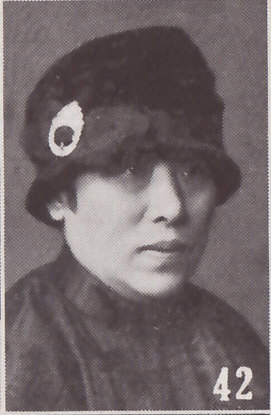
Sun Yat-sen was a Chinese physician,revolutionary,statesman,and political philosopher who founded the Republic of China (ROC) and its first political party,the Kuomintang (KMT). As the paramount leader of the 1911 Revolution,Sun is credited with overthrowing the Qing imperial dynasty and served as the first president of the Provisional Government of the Republic of China (1912) and as the inaugural Chairman of the Kuomintang.

Wang Zhaoming,widely known by his pen name Wang Jingwei,was a Chinese politician who was president of the Reorganized National Government of the Republic of China,a puppet state of the Empire of Japan. He was initially a member of the left wing of the Kuomintang (KMT),leading a government in Wuhan in opposition to the right-wing Nationalist government in Nanjing,but later became increasingly anti-communist after his efforts to collaborate with the Chinese Communist Party ended in political failure.

Zhongshan alternately romanized via Cantonese as Chungshan is a prefecture-level city in the south of the Pearl River Delta in Guangdong province,China. As of the 2020 census,the whole city with 4,418,060 inhabitants is now part of the Guangzhou–Shenzhen conurbation with 65,565,622 inhabitants. The city-core subdistricts used to be called Shiqi or Shekki.

Sun Fo,courtesy name Zhesheng (哲生),was a Chinese politician and high-ranking official in the government of the Republic of China. He was the son of Sun Yat-sen,the founder of the Republic of China,and his first wife Lu Muzhen.
Zhongshan (中山市) is a prefecture-level city in Guangdong province,People's Republic of China.

Hu Hanmin was a Chinese philosopher and politician who was one of the early conservative right-wing faction leaders in the Kuomintang (KMT) during revolutionary China.

Zhang Fakui was a Chinese Nationalist general who fought against northern warlords,the Imperial Japanese Army and Chinese Communist forces in his military career. He served as commander-in-chief of the 8th Army Group and commander-in-chief of NRA ground force before retiring in Hong Kong in 1949.

The Canton Coup of 20 March 1926,also known as the Zhongshan Incident or the March 20th Incident, was a purge of Communist elements of the Nationalist army in Guangzhou undertaken by Chiang Kai-shek. The incident solidified Chiang's power immediately before the successful Northern Expedition,turning him into the paramount leader of the country.
The Yunnan–Guangxi War was a war of succession fought for control of the Chinese Nationalist Party after the death of Sun Yat-sen in 1925. It was launched by the Yunnan clique against the party leadership and the New Guangxi clique.
Chung Shan is a historical alternative spelling of "Zhongshan",a Chinese name. It most commonly refers to:

The Sun Yat-sen or Zhongshan Memorial Hall is an octagon-shaped building in Guangzhou,capital of China's Guangdong Province. The hall was designed by Lu Yanzhi and was built with funds raised by local and overseas Chinese people in memory of Sun Yat-sen. Construction work commenced in 1929 and completed in 1931. The hall is a large octagonal structure with a span of 71 metres (233 ft) without pillars,housing a large stage and seats 3,240 people.

Yeung Ku-wan was a Chinese revolutionary of the late Qing dynasty. In 1890,Yeung started the Furen Literary Society in British Hong Kong to spread ideas of revolution against the Qing dynasty and to establish a republic in China. He became the first President of the Hong Kong Chapter of the Revive China Society in 1894 and was,with Sun Yat-sen,in charge of planning an uprising in Canton in 1895 and in Huizhou in 1900. Yeung was assassinated in 1901 in Hong Kong by an agent sent by the Qing government.

Luo Xianxiang (1890–1968) was a World War II Chinese general who served in the army of Chen Jiongming. He was a soldier,and at times,a regional government official. He established anti-corruption policies and conducted administrative and education reforms.

The Yongfeng class were early-20th century gunboats built for the Chinese navy. They were enlarged sea-going versions of the Kiang- and Chu-class gunboats. The first ships,Yongfeng and Yongxiang,were built in Japan by Kawasaki;they were launched in 1912-1913. The remainder,Yongjian and Yongji,were built in 1915 by the Jiangnan Shipyard in China;these ships had added poop decks.

He Xiangning was a Chinese revolutionary,feminist,politician,painter,and poet. Together with her husband Liao Zhongkai,she was one of the earliest members of Sun Yat-sen's revolutionary movement Tongmenghui. As Minister for Women's Affairs in Sun's Nationalist government in Guangzhou (Canton),she advocated equal rights for women and organized China's first rally for International Women's Day in 1924. After her husband's assassination in 1925 and Chiang Kai-shek's persecution of the Communists in 1927,she stayed away from party politics for two decades,but actively worked to organize resistance against the Japanese invasion of China.

Ye Ju (1881–1934),formerly romanized as Yeh Chü, was a Chinese Nationalist general and governor of Guangdong Province.

Xu Qian or George Hsu was a Chinese politician and jurist. He made important contribution to the judicial system of modern China.
The Chu class were early-20th century gunboats built for the Imperial Chinese Navy of the Qing Empire. Six - Chu Yu,Chu Tung,Chu Chien,Chu Kuan,Chu Tai, Chu Yiu - were built by Kawasaki in Japan;they were launched in 1906-1907.



















